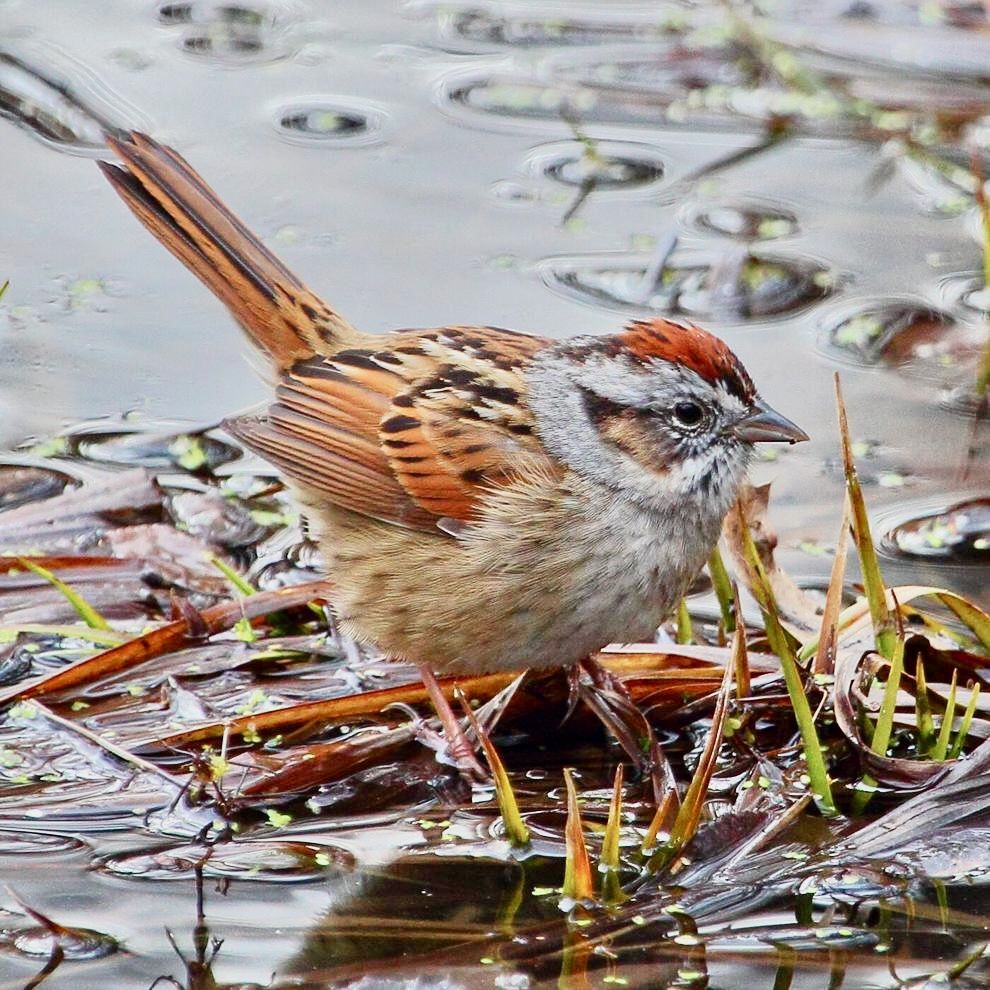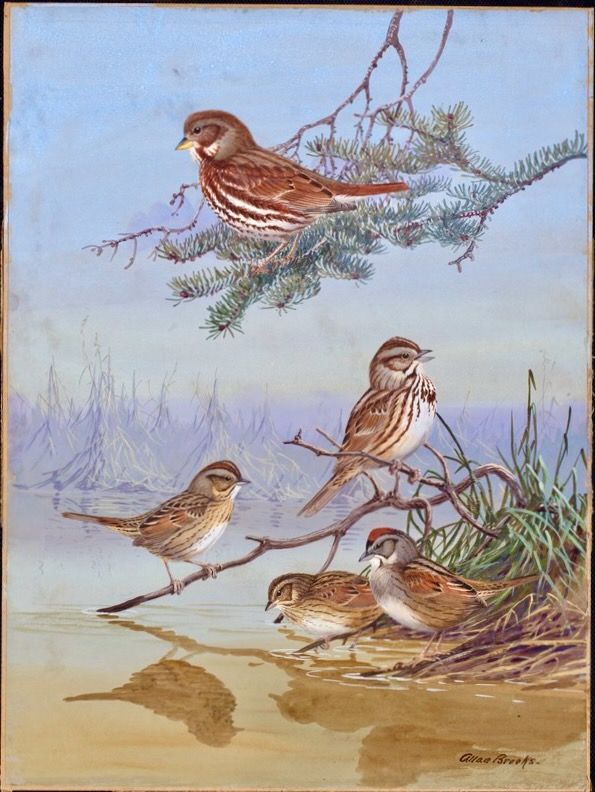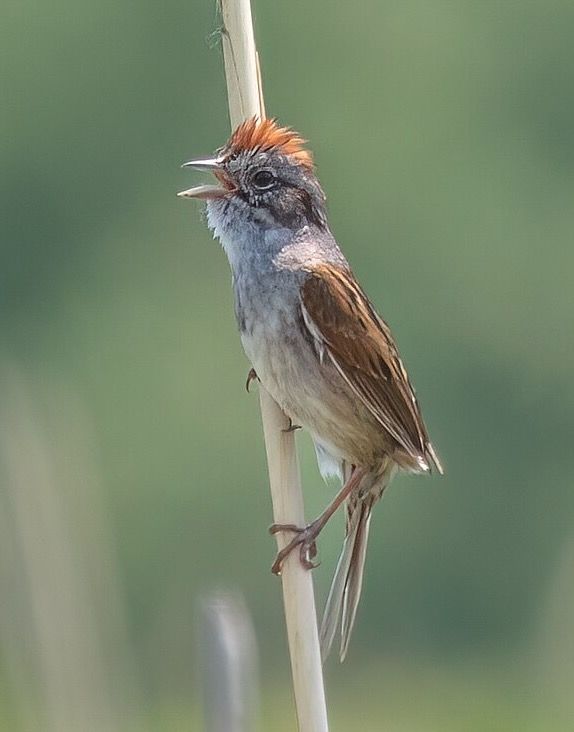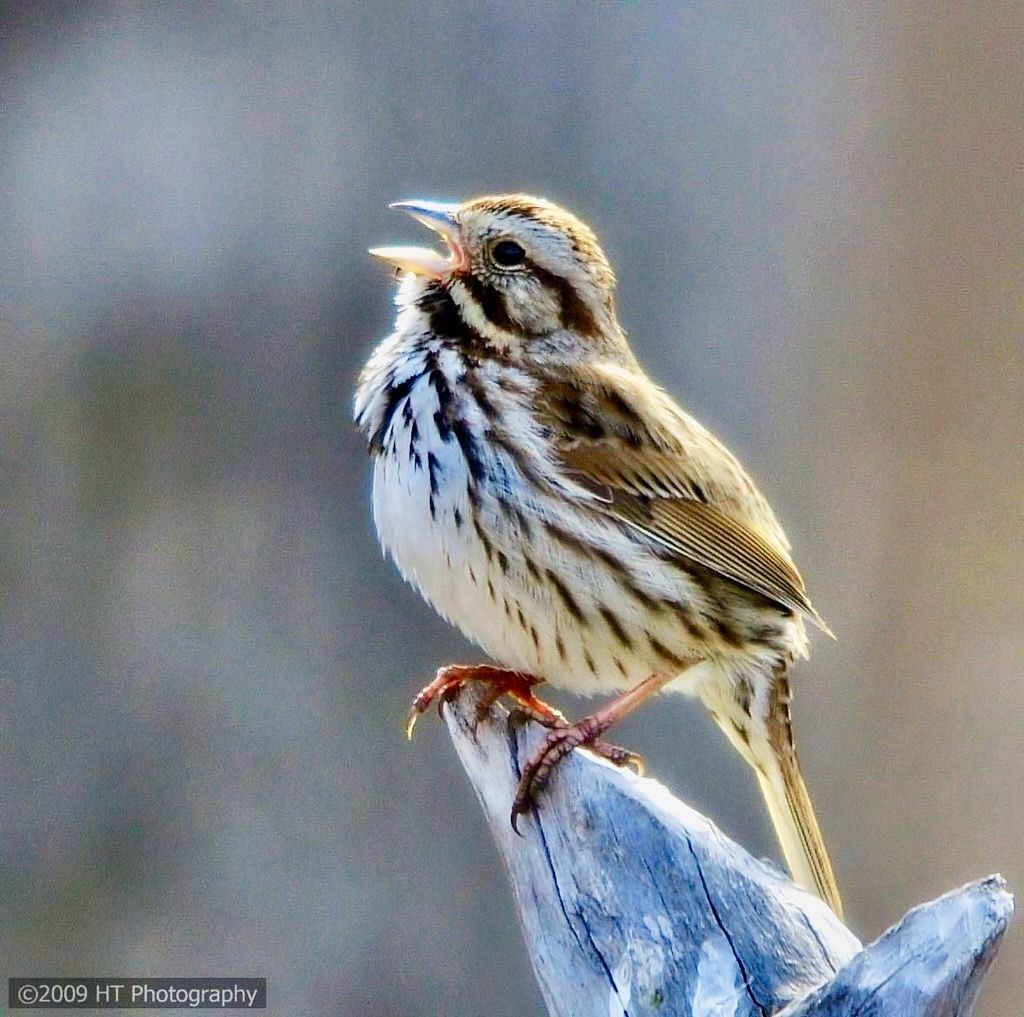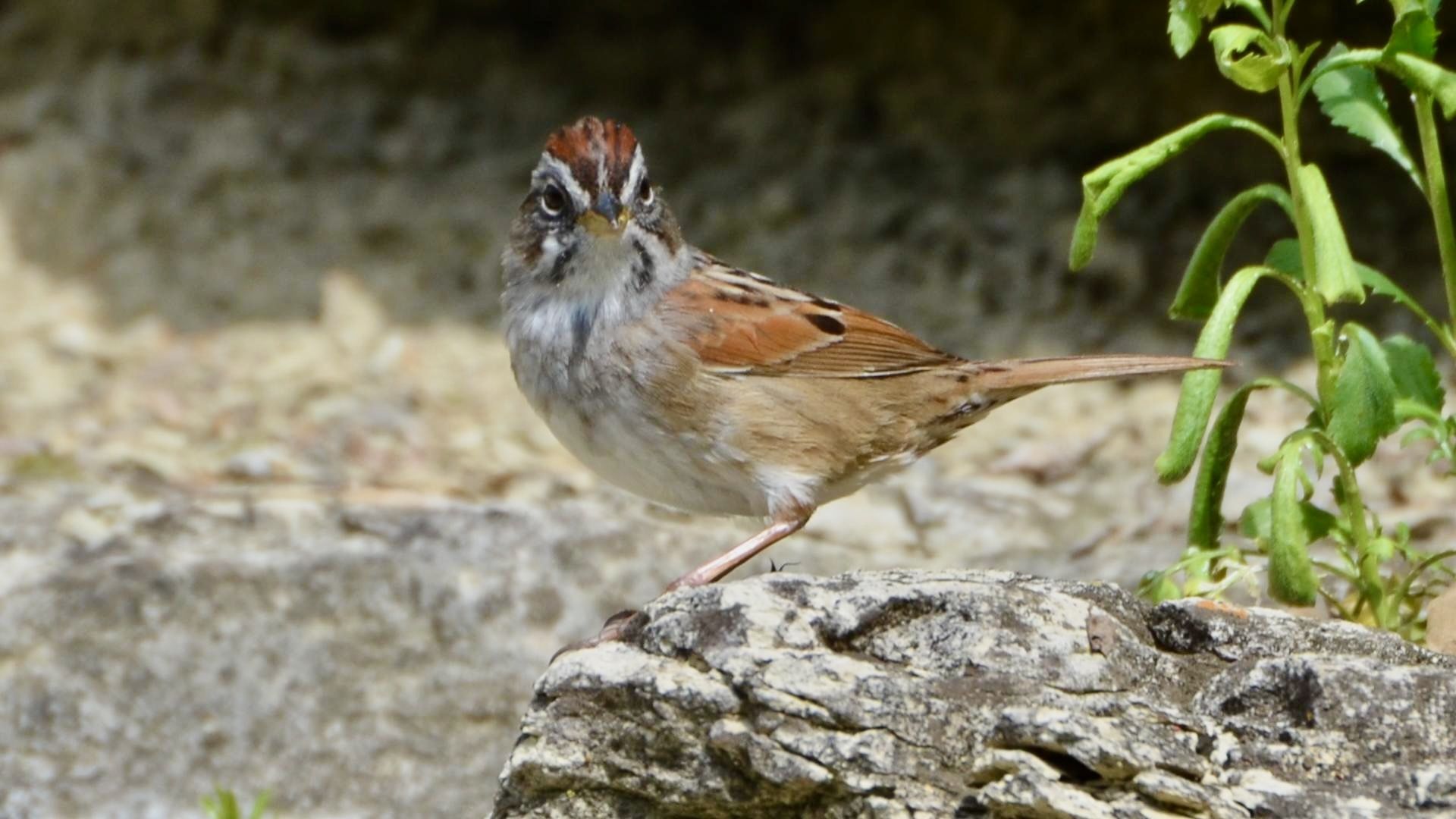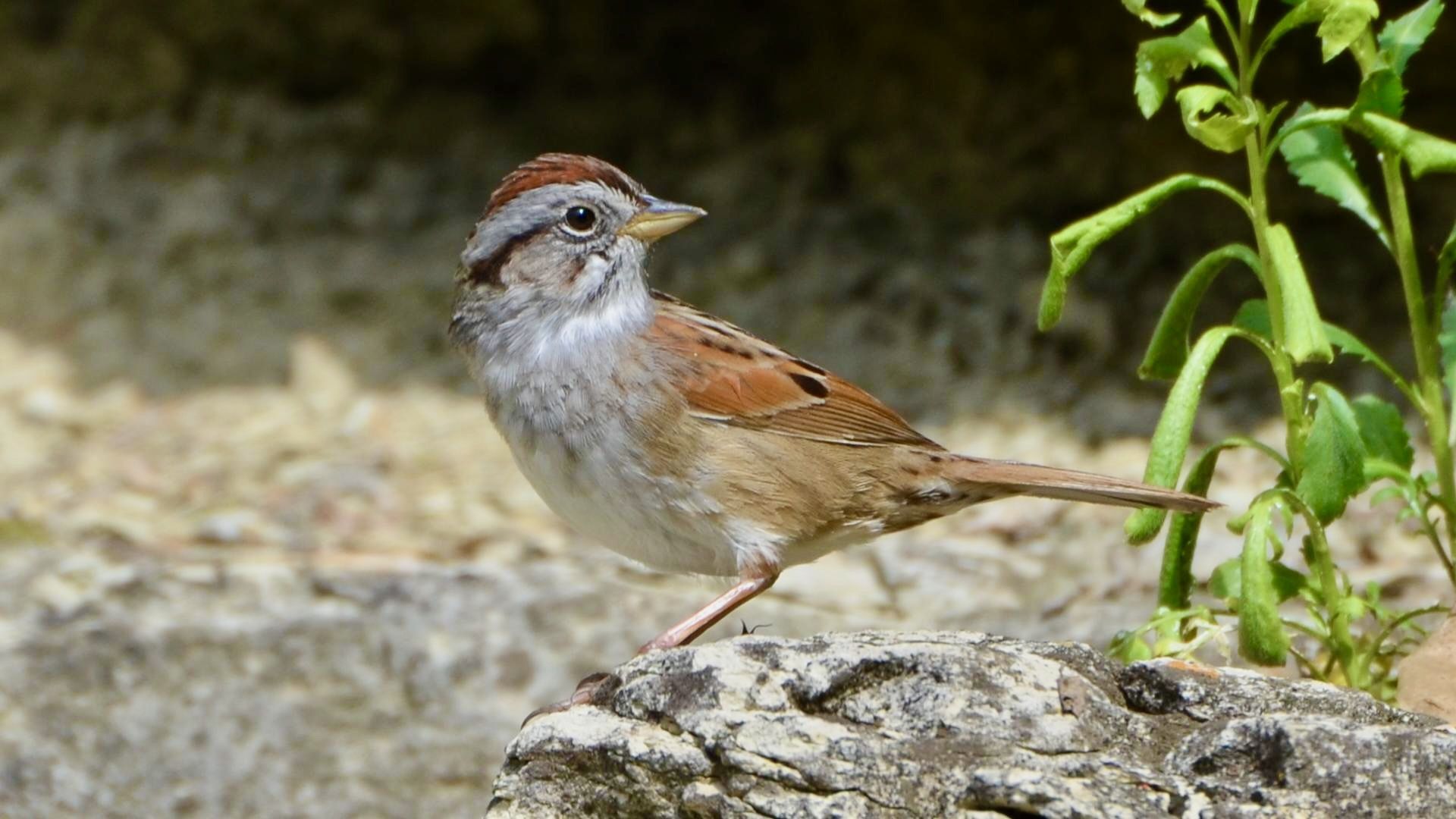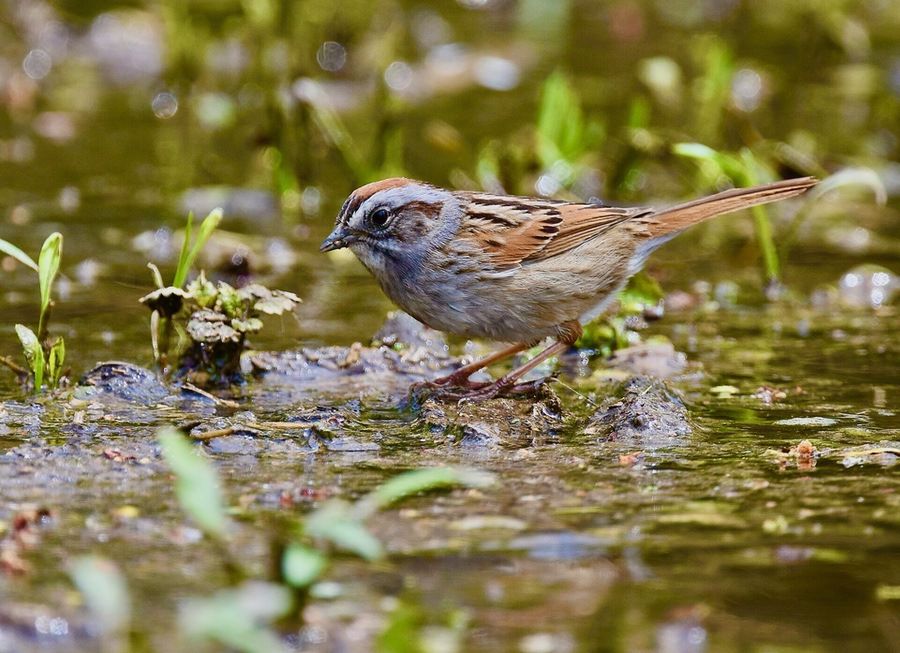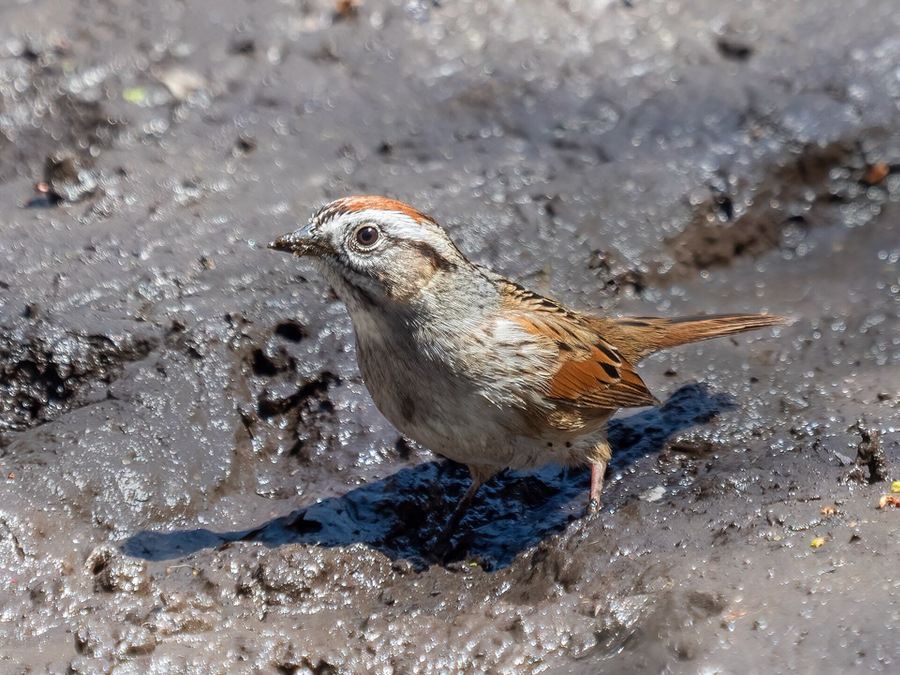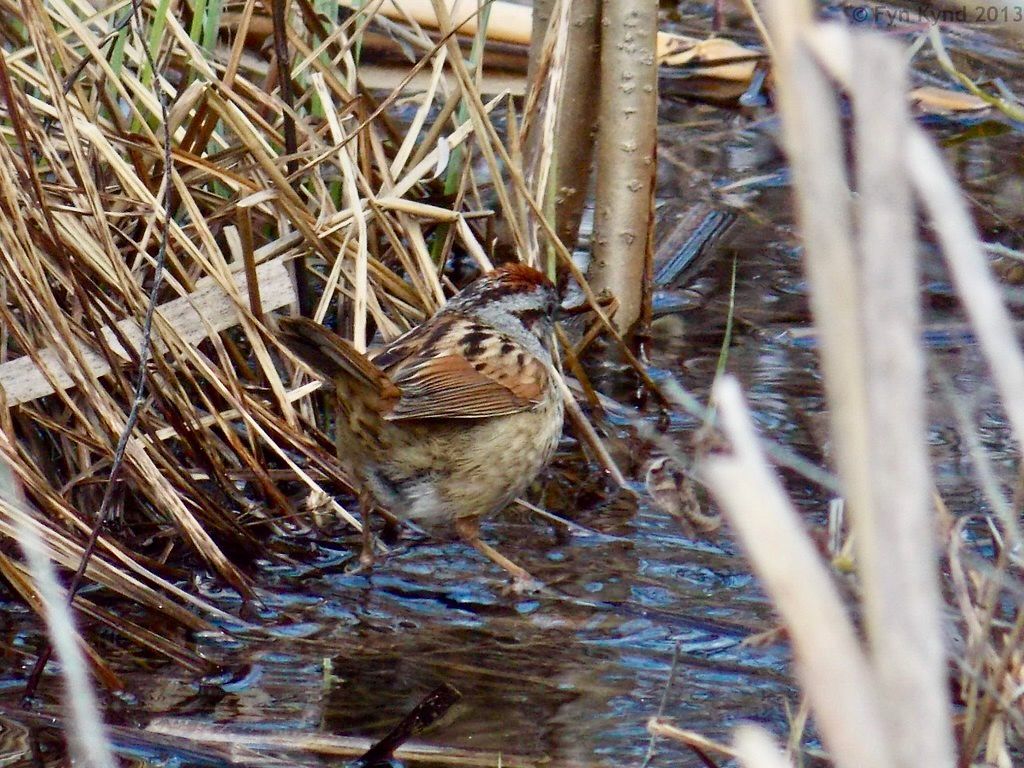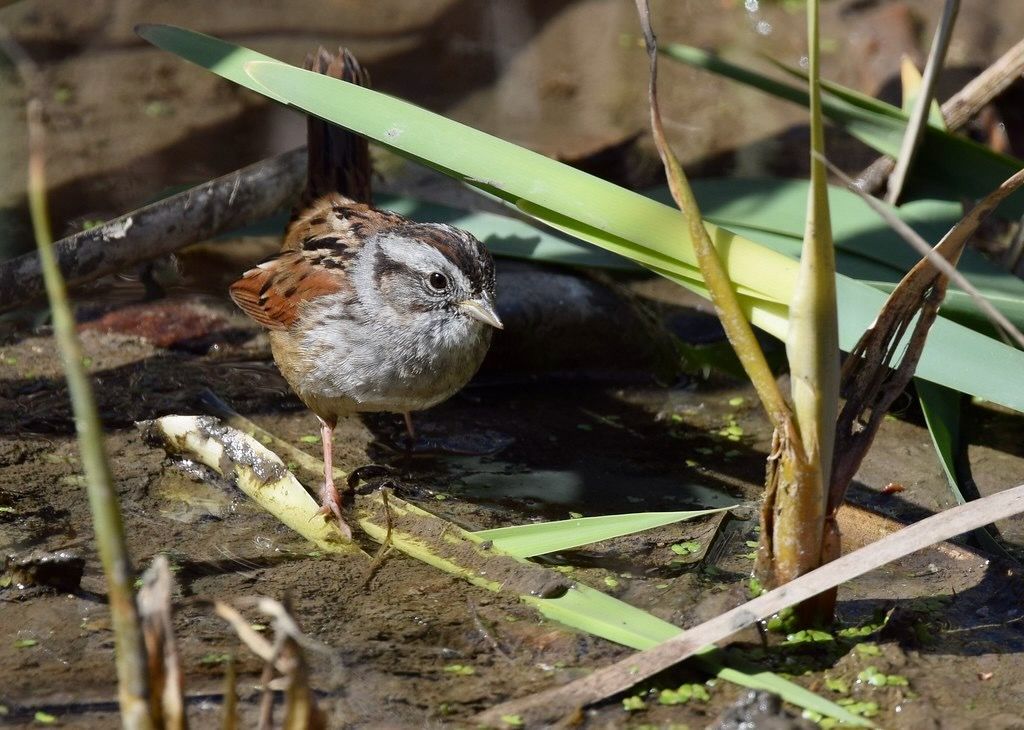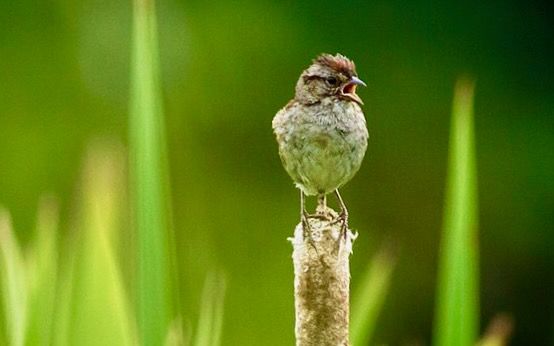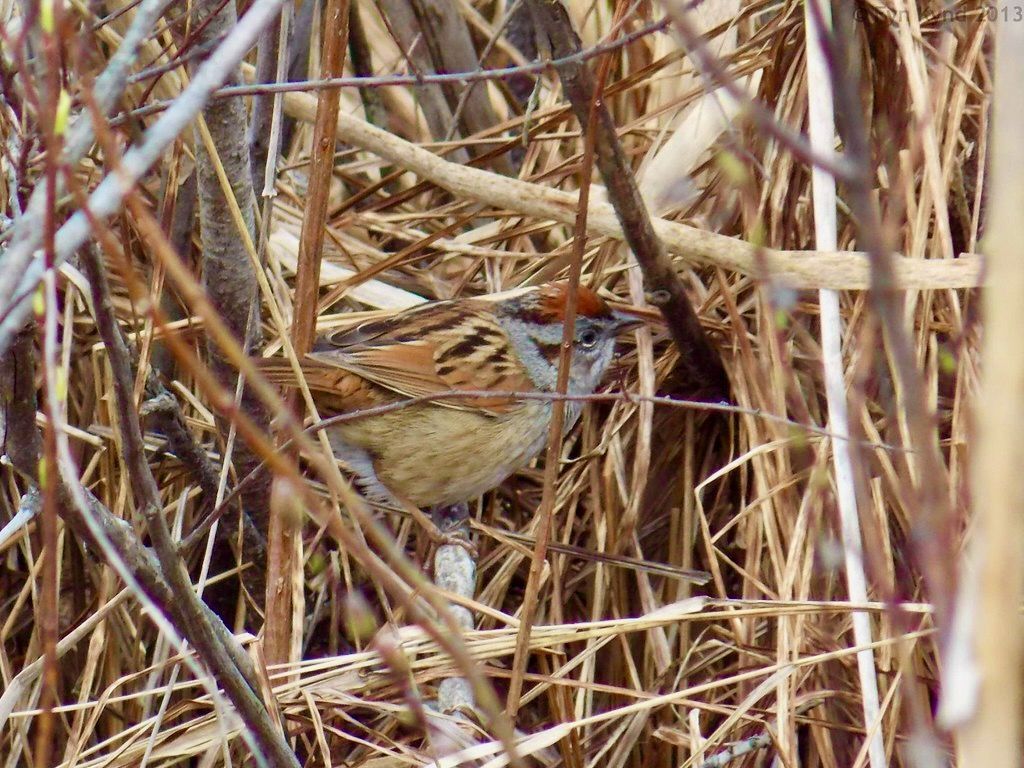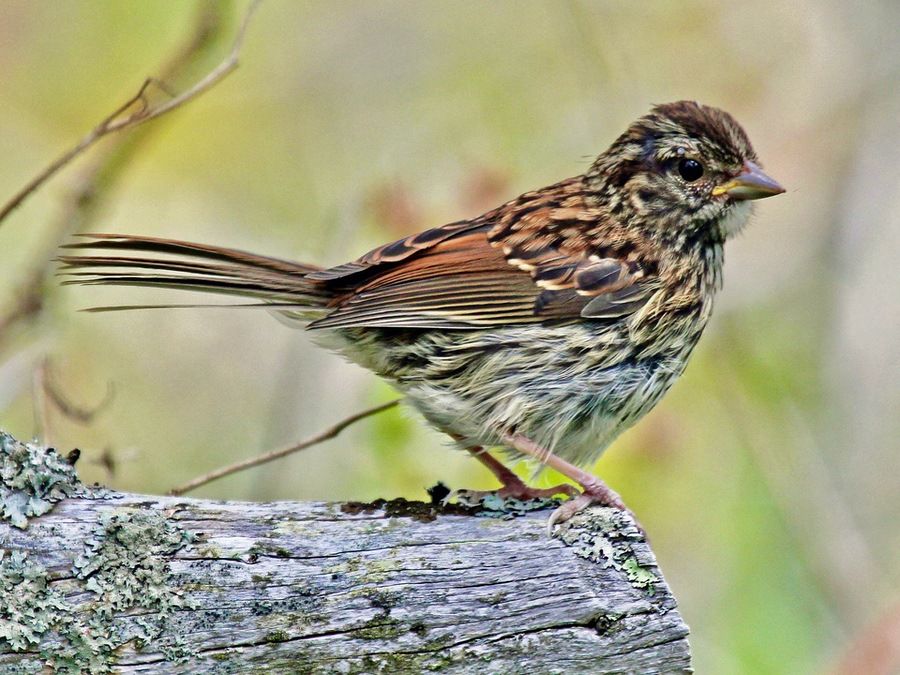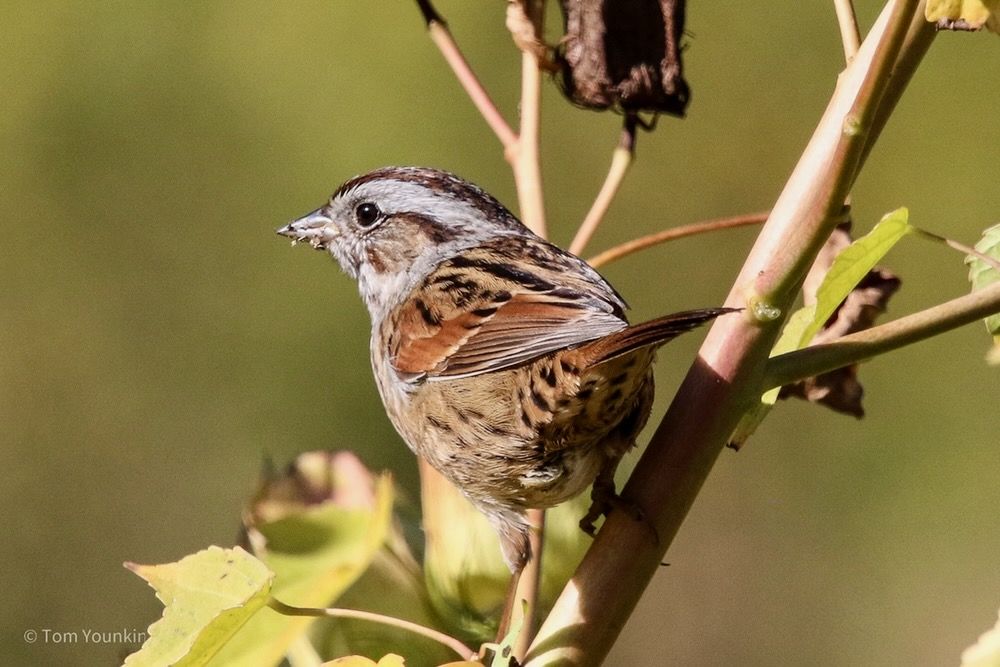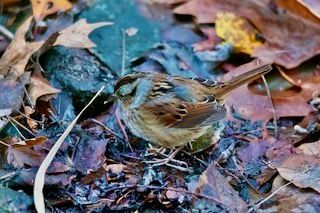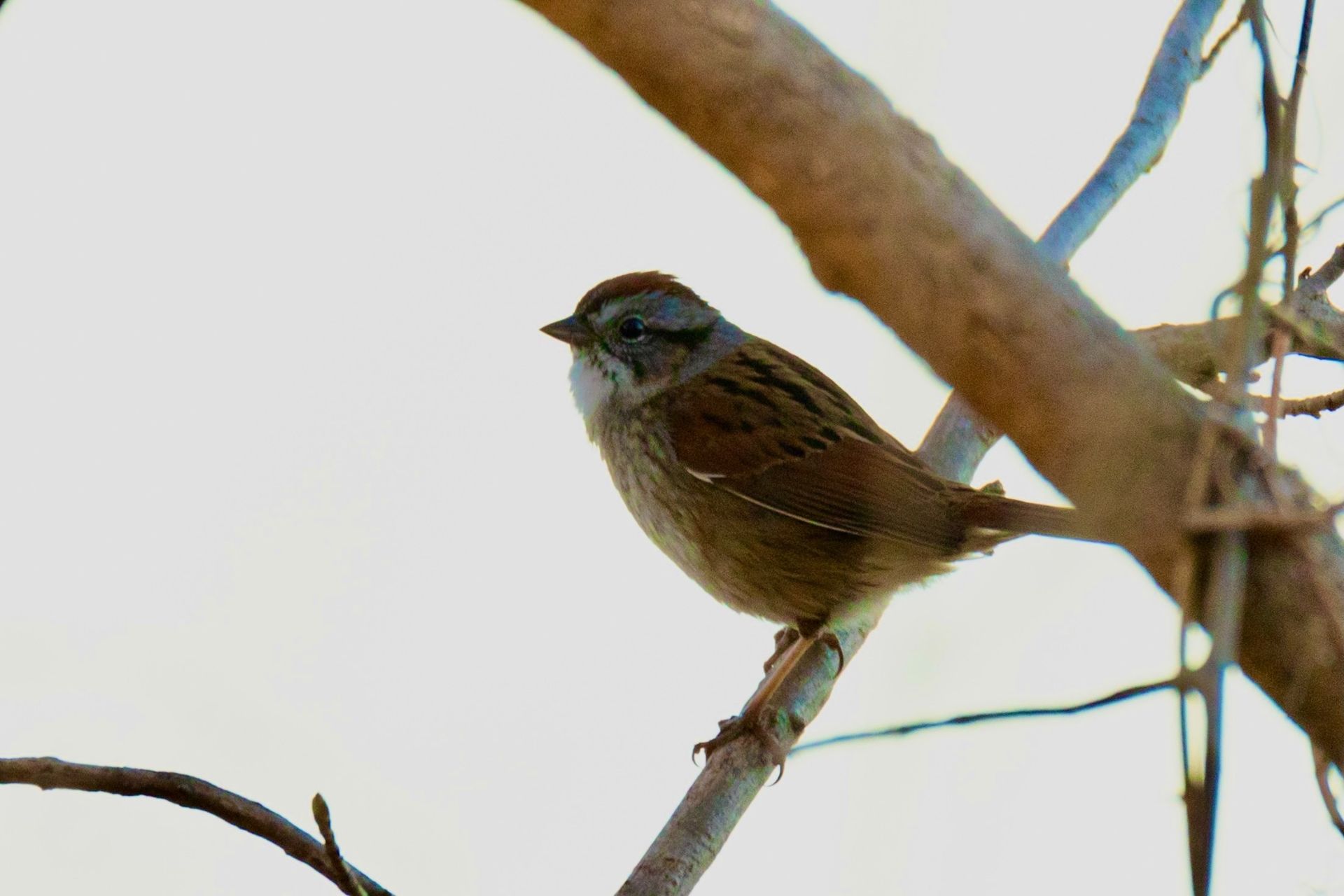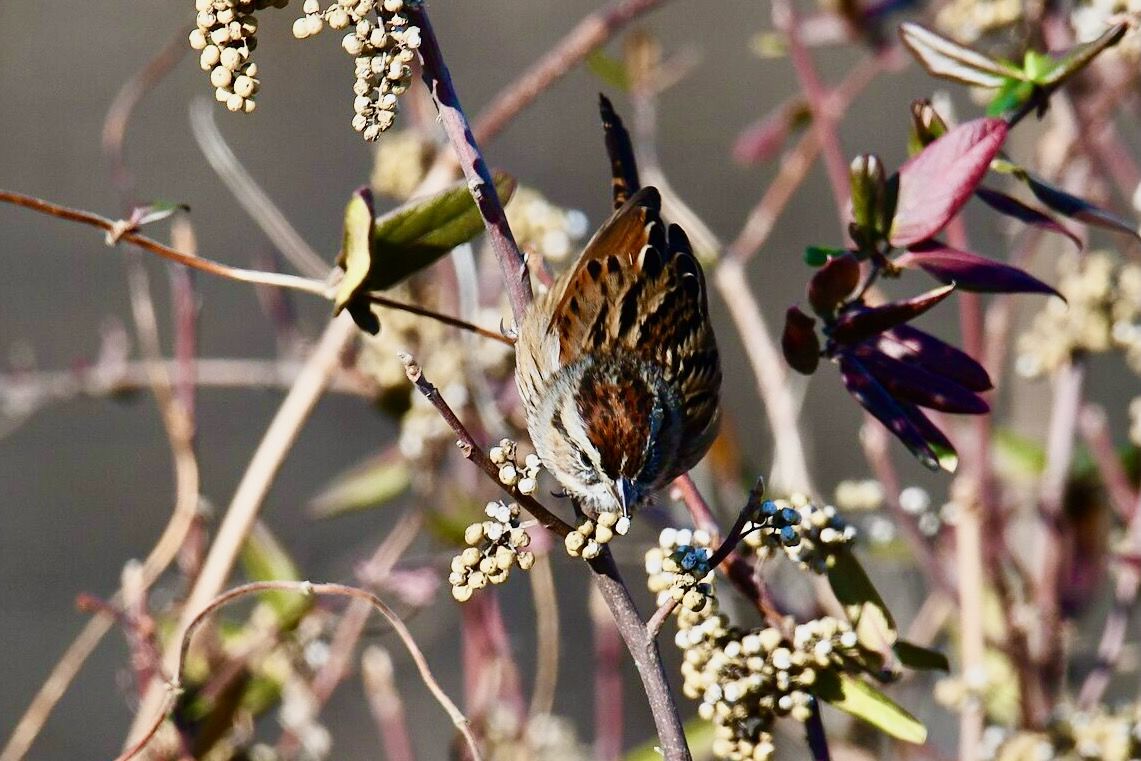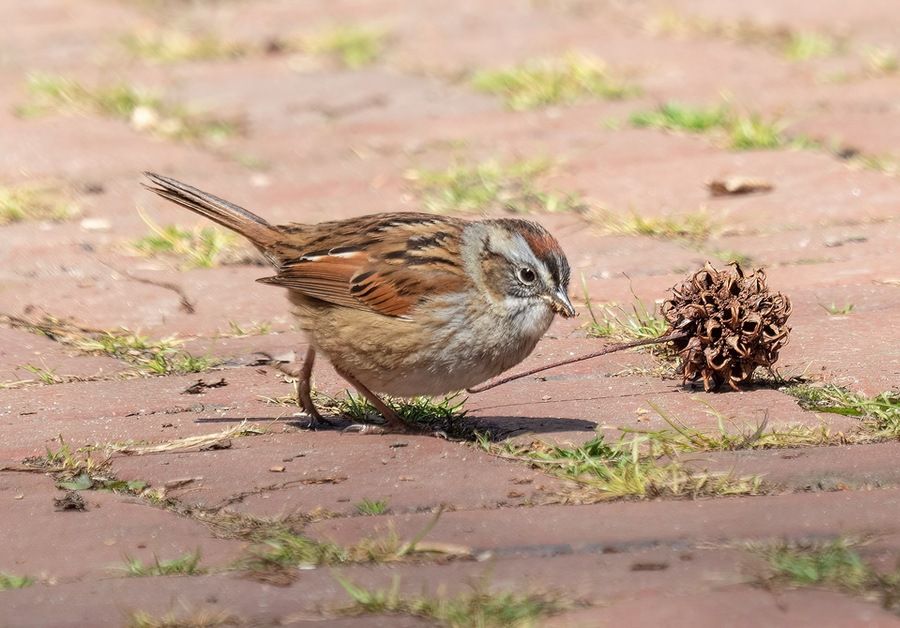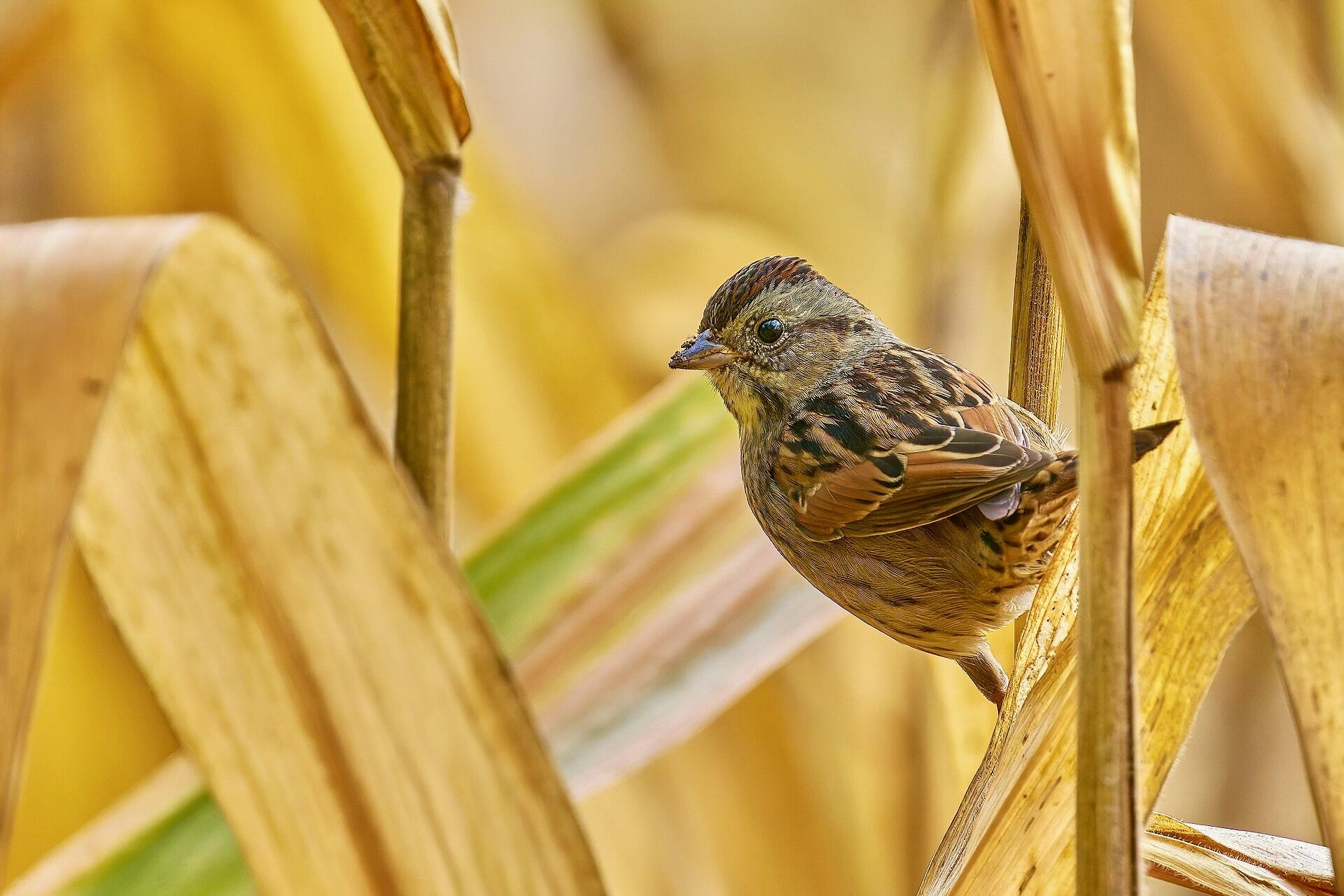Swamp Sparrow
Every year, a few Swamp Sparrows are recorded at Salter Grove during spring and fall migration. Sightings have invariably been near wet areas of the park, such as the storm drain near the Dawn redwood, the grove of black-gum near the vernal pond, or the patch of narrow-leaved cat-tails at the south end of the Marsh Trail.
Unless it happens to be in the open, it is not the easiest migrant to identify despite its white throat, and rufous cap and wings. It usually stays hidden within vegetation and can easily be dismissed as the more common Song Sparrow. However, it is not shy when approached and can be persuaded to emerge from hiding with shushing for a clearer view.
The Swamp Sparrow breeds in freshwater wetlands (bogs, marshes, swamps, wet meadows) across boreal Canada and north central and northeastern United States. The non-breeding months are spent in similar habitats in southeastern United States and northern Central America.
Like other sparrows, it feeds on seeds, small fruits, and terrestrial invertebrates like ants, bees, wasps, beetles, aphids, caterpillars, grasshoppers, and crickets. Its diet includes mostly animal matter during the summer but is dominated by plant matter during the colder months. Compared with other sparrows, its legs are relatively longer which enables it to wade into shallow water or mud to forage on aquatic invertebrates as well.
Long before the development and use of radio transmitters, the recapture of previously banded birds quite effectively established the timing, and moreover, tracked the path of migration for some birds. A Swamp Sparrow banded in eastern Massachusetts on October 4, 1937 traveled about 1,125 miles before it was recaptured in central Florida in January 1938.
An annotated list of Rhode Island birds from the late 1800's considered the Swamp Sparrow a common summer resident in suitable marshy habitats that was also very abundant during fall migration. More recent studies conducted for The Second Atlas of Breeding Birds in Rhode Island have not detected any major decline in numbers. However, a warming climate may eventually shift the breeding range northwards.
For more information:
https://www.allaboutbirds.org/guide/Swamp_Sparrow
https://www.audubon.org/field-guide/bird/swamp-sparrow
https://animaldiversity.org/accounts/Melospiza_georgiana/
https://en.wikipedia.org/wiki/Swamp_sparrow
https://abcbirds.org/bird/swamp-sparrow/
Clarkson, C. E., Osenkowski, J. E., Steen, V. A., Duhaime, R. J., and Paton, W.C. (2023) The Second Atlas of Breeding Birds in Rhode Island. Rhode Island Department of Environmental Management Division of Fish and Wildlife. pp. 342-343..
Howe, Jr., R.H. and Sturtevant, E. (1899) The Birds of Rhode Island. p. 73-74.

